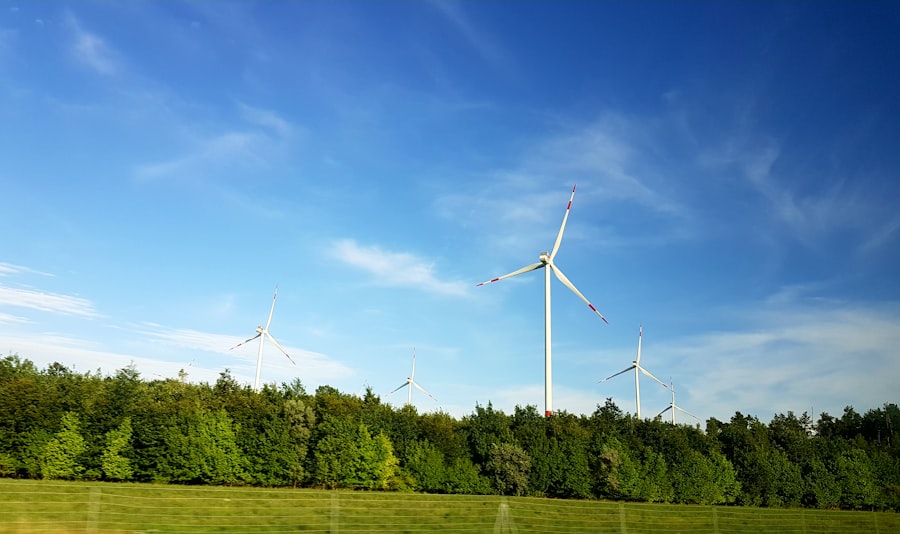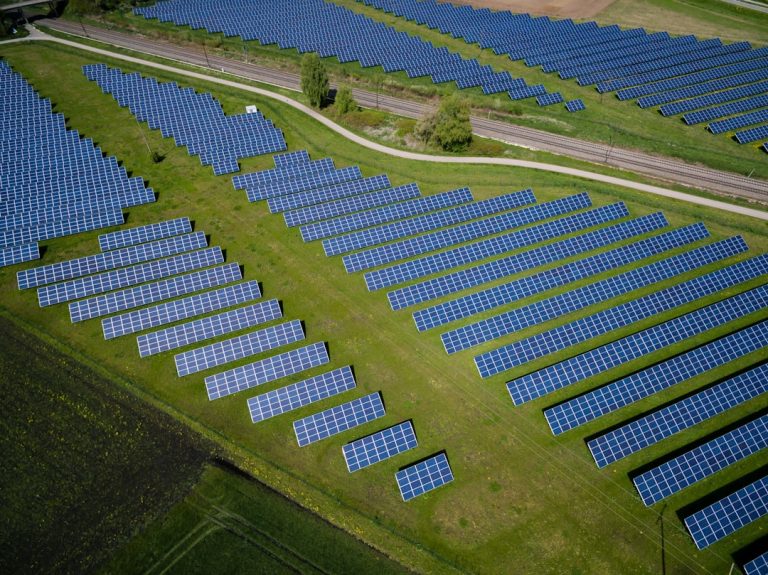
The United States has witnessed a remarkable transformation in its energy landscape over the past few decades, with wind energy emerging as a significant player in the renewable energy sector. As of 2023, wind power accounts for approximately 9% of the total electricity generation in the country, a figure that has steadily increased from just 1% in 2000. This surge can be attributed to a combination of technological advancements, favorable government policies, and growing public awareness of climate change.
States like Texas, Iowa, and Oklahoma have become leaders in wind energy production, harnessing their vast open spaces and favorable wind conditions to install large-scale wind farms. The growth of wind energy is not merely a trend; it represents a fundamental shift towards sustainable energy sources. The U.S.
Department of Energy has projected that wind energy could supply up to 35% of the nation’s electricity by 2050 if current trends continue. This ambitious goal is supported by ongoing investments in research and development, which aim to improve turbine efficiency and reduce costs. Furthermore, the increasing urgency to combat climate change has led to a greater emphasis on renewable energy sources, with wind power being one of the most viable options available.
As a result, the wind energy sector is poised for continued expansion, creating numerous job opportunities and driving economic growth in various regions.
Key Takeaways
- Wind energy has seen a significant rise in the United States, with an increasing number of wind farms and turbines being installed across the country.
- Wind turbine service technicians play a crucial role in the maintenance and repair of these turbines, ensuring their efficient operation and longevity.
- Training and education for wind turbine service technicians is essential, with many technical schools and community colleges offering specialized programs for aspiring technicians.
- The job outlook for wind turbine service technicians is promising, with a projected growth rate much faster than the average for all occupations.
- Safety is of utmost importance in wind turbine maintenance, as technicians often work at great heights and in challenging weather conditions.
The Role of Wind Turbine Service Technicians
Wind turbine service technicians play a crucial role in the maintenance and operation of wind energy systems. These skilled professionals are responsible for ensuring that wind turbines operate efficiently and safely, which is essential for maximizing energy production and minimizing downtime. Their duties encompass a wide range of tasks, including routine inspections, troubleshooting mechanical and electrical issues, and performing repairs on turbine components.
In addition to technical skills, wind turbine service technicians must possess strong problem-solving abilities and a keen attention to detail. They often work in challenging environments, such as remote locations or elevated heights, which requires physical stamina and a commitment to safety protocols.
The role also involves working with advanced technology, including computer systems that monitor turbine performance and diagnose issues. As the demand for wind energy continues to grow, the importance of skilled technicians who can maintain and repair these systems becomes increasingly evident. Their work not only ensures the reliability of wind farms but also contributes to the overall sustainability goals of the energy sector.
Training and Education for Wind Turbine Service Technicians

To become a wind turbine service technician, individuals typically need a combination of formal education and hands-on training. Many technicians start their careers with an associate degree in wind energy technology or a related field, which provides foundational knowledge in areas such as electrical systems, mechanical systems, and safety practices. These programs often include coursework in physics, mathematics, and environmental science, equipping students with the theoretical understanding necessary for the job.
In addition to formal education, practical experience is crucial for aspiring technicians. Many educational programs incorporate internships or cooperative education opportunities that allow students to gain real-world experience working alongside seasoned professionals in the field. This hands-on training is invaluable, as it helps students develop the skills needed to troubleshoot issues and perform maintenance tasks effectively.
Furthermore, many employers prefer candidates who have completed specialized training programs or certifications from recognized organizations, such as the National Renewable Energy Laboratory or the American Wind Energy Association. These credentials not only enhance a technician’s employability but also demonstrate a commitment to professional development in an evolving industry.
Job Outlook and Growth Opportunities
| Job Title | Projected Growth Rate | Median Salary |
|---|---|---|
| Software Developer | 22% | 105,590 |
| Registered Nurse | 12% | 73,300 |
| Financial Analyst | 6% | 83,660 |
| Marketing Manager | 7% | 141,490 |
The job outlook for wind turbine service technicians is exceptionally promising, reflecting the broader growth of the renewable energy sector. According to the U.S. Bureau of Labor Statistics (BLS), employment for wind turbine service technicians is projected to grow by 61% from 2020 to 2030, significantly faster than the average for all occupations.
This surge in demand is driven by the increasing number of wind farms being constructed across the country and the need for ongoing maintenance of existing turbines. As more states commit to renewable energy targets and invest in infrastructure to support wind energy production, opportunities for technicians will continue to expand. Additionally, advancements in technology may lead to new roles within the field, such as specialists in drone inspections or data analysis for turbine performance optimization.
Technicians who are willing to pursue further education or certifications may find themselves well-positioned for advancement into supervisory or management roles within their organizations. The combination of a robust job market and diverse career pathways makes this profession an attractive option for those interested in contributing to a sustainable future.
The Importance of Safety in Wind Turbine Maintenance
Safety is paramount in the field of wind turbine maintenance due to the inherent risks associated with working at heights and handling heavy machinery. Technicians must adhere to strict safety protocols to minimize accidents and injuries while performing their duties. This includes wearing appropriate personal protective equipment (PPE), such as harnesses, helmets, and safety glasses, as well as following established procedures for working on turbines.
Training programs emphasize safety awareness and emergency response procedures to prepare technicians for potential hazards they may encounter on the job. For instance, technicians are trained to recognize signs of equipment failure or malfunction that could pose safety risks. Additionally, they learn how to conduct thorough inspections before beginning maintenance work to ensure that all systems are functioning correctly.
The emphasis on safety not only protects technicians but also contributes to the overall reliability of wind energy systems, ensuring that they operate efficiently without compromising worker well-being.
The Advantages and Challenges of Working as a Wind Turbine Service Technician

Working as a wind turbine service technician offers several advantages that appeal to individuals seeking a fulfilling career in renewable energy. One of the most significant benefits is the opportunity to contribute directly to environmental sustainability efforts. Technicians play a vital role in maintaining clean energy sources that help reduce greenhouse gas emissions and combat climate change.
This sense of purpose can be highly rewarding for those passionate about environmental issues. However, the job also comes with its challenges. Technicians often work in remote locations where access can be difficult, requiring long hours and travel away from home.
The physical demands of climbing turbines and working at heights can be taxing, necessitating good physical fitness and mental resilience. Additionally, technicians may face unpredictable weather conditions that can complicate maintenance tasks or lead to delays. Despite these challenges, many technicians find that the rewards of working in a growing industry focused on sustainability outweigh the difficulties they encounter.
Salary and Benefits for Wind Turbine Service Technicians
The financial prospects for wind turbine service technicians are generally favorable compared to many other occupations within the renewable energy sector. According to data from the BLS, as of May 2022, the median annual wage for wind turbine service technicians was approximately $56,000. However, salaries can vary based on factors such as experience level, geographic location, and specific employer practices.
Technicians with several years of experience or specialized certifications may command higher salaries or additional benefits. In addition to competitive wages, many employers offer comprehensive benefits packages that can include health insurance, retirement plans, paid time off, and opportunities for professional development. Some companies also provide bonuses or incentives based on performance metrics related to turbine efficiency or maintenance schedules.
These benefits contribute to job satisfaction and help attract new talent into the field as demand for skilled technicians continues to rise.
The Future of Wind Turbine Service Technicians in the United States
Looking ahead, the future for wind turbine service technicians appears bright as the United States continues its transition towards renewable energy sources. With ambitious goals set by both federal and state governments regarding carbon neutrality and renewable energy adoption, there will be an increasing need for skilled professionals who can maintain and optimize wind energy systems. As technology evolves—such as advancements in turbine design and automation—technicians will need to adapt their skills accordingly.
Moreover, as more companies invest in offshore wind projects along with onshore developments, new opportunities will arise within this niche sector.
Overall, as society increasingly prioritizes sustainable energy solutions, wind turbine service technicians will remain essential contributors to achieving these goals while enjoying robust career prospects in an evolving industry landscape.
According to a recent article on Careers in the USA, Wind Turbine Service Technicians are among the fastest-growing occupations in the country. This career path offers promising job prospects and opportunities for growth in the renewable energy sector. With the increasing demand for clean energy sources, the need for skilled technicians to maintain and repair wind turbines is on the rise. If you are considering a career in this field, be sure to check out the article for more information on the job outlook and requirements for Wind Turbine Service Technicians.
FAQs
What is the job of a wind turbine service technician?
Wind turbine service technicians, also known as windtechs, install, maintain, and repair wind turbines.
Why are wind turbine service technicians considered one of the fastest growing occupations in the USA?
The demand for clean, renewable energy sources has led to a rapid increase in the construction and maintenance of wind farms, creating a high demand for wind turbine service technicians.
What are the educational requirements to become a wind turbine service technician?
Most wind turbine service technicians learn their trade through technical schools or on-the-job training. Some employers may require a certificate or associate’s degree in wind energy technology.
What is the average salary of a wind turbine service technician?
According to the U.S. Bureau of Labor Statistics, the median annual wage for wind turbine service technicians was $56,230 in May 2020.
What are the working conditions like for wind turbine service technicians?
Wind turbine service technicians often work outdoors, sometimes at great heights. They may also be required to work in tight spaces within the turbine structure. The job can be physically demanding and may involve working in various weather conditions.
What are the prospects for job growth in this field?
The U.S. Bureau of Labor Statistics projects that employment of wind turbine service technicians is projected to grow 68 percent from 2020 to 2030, much faster than the average for all occupations.






